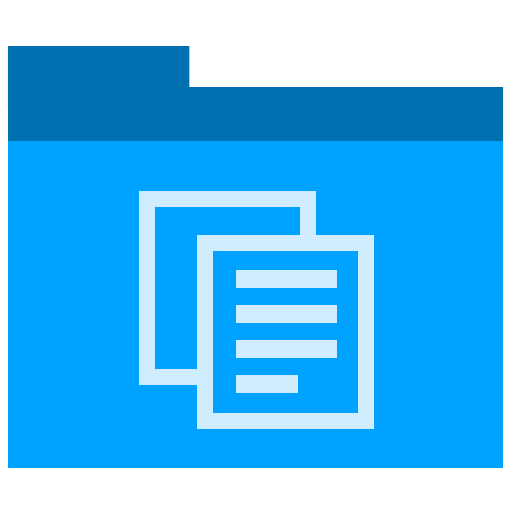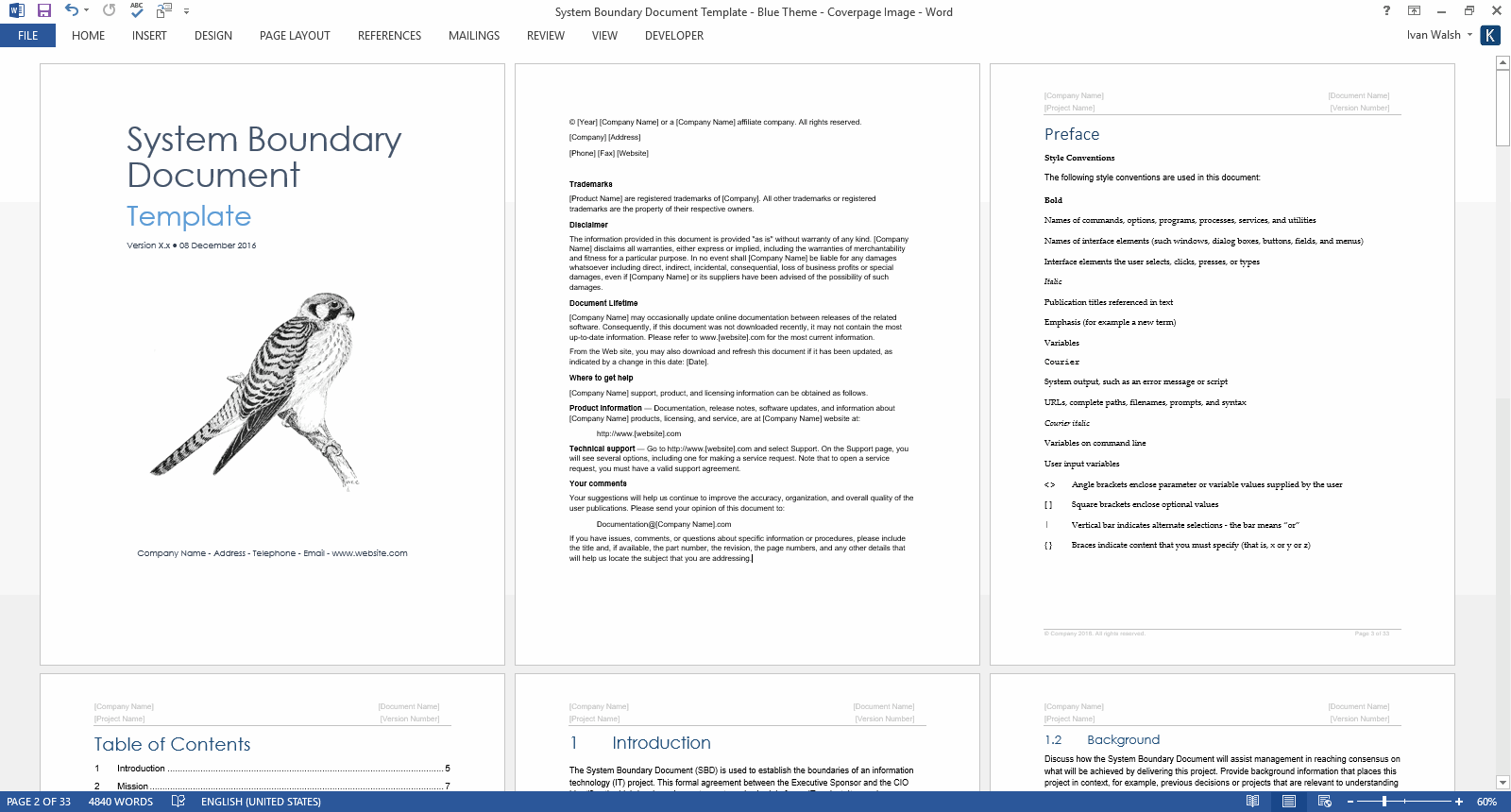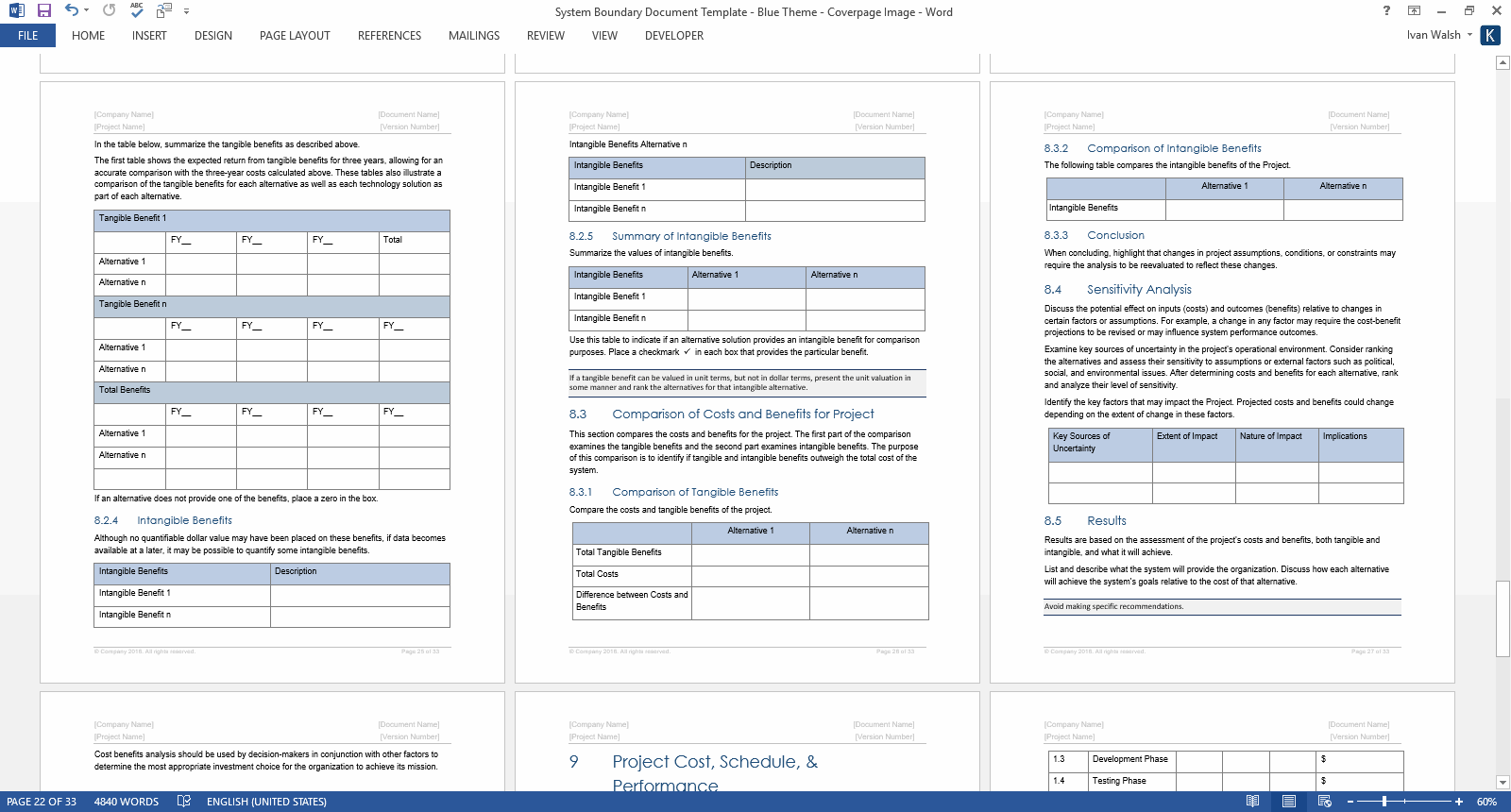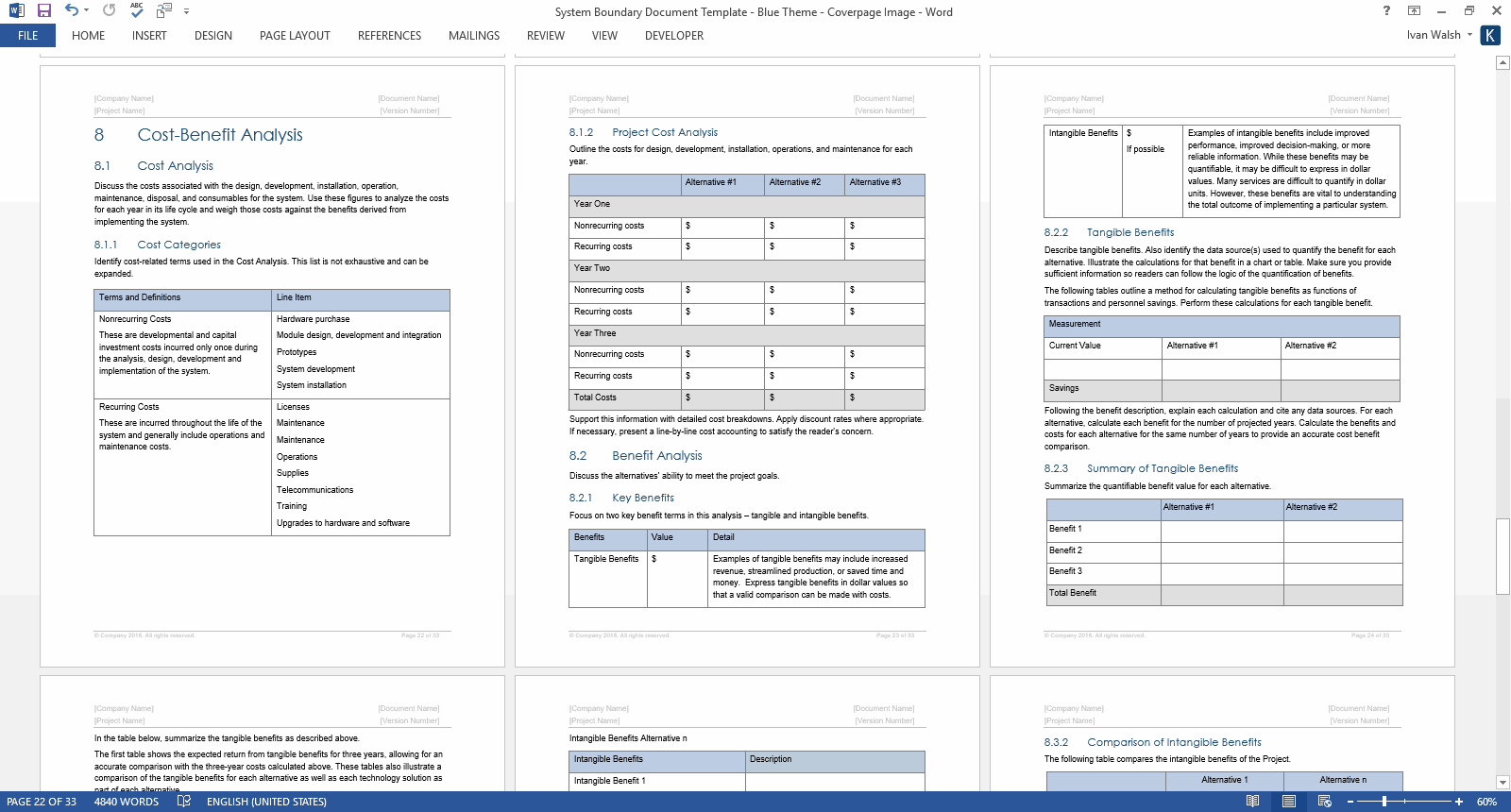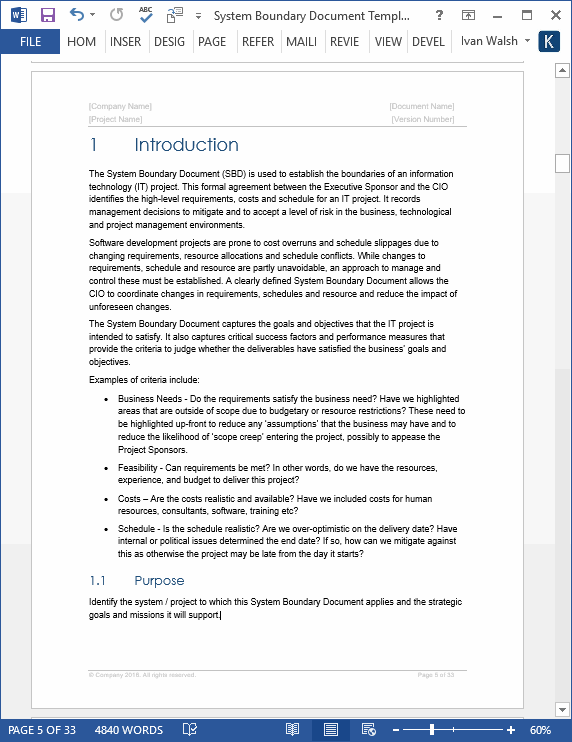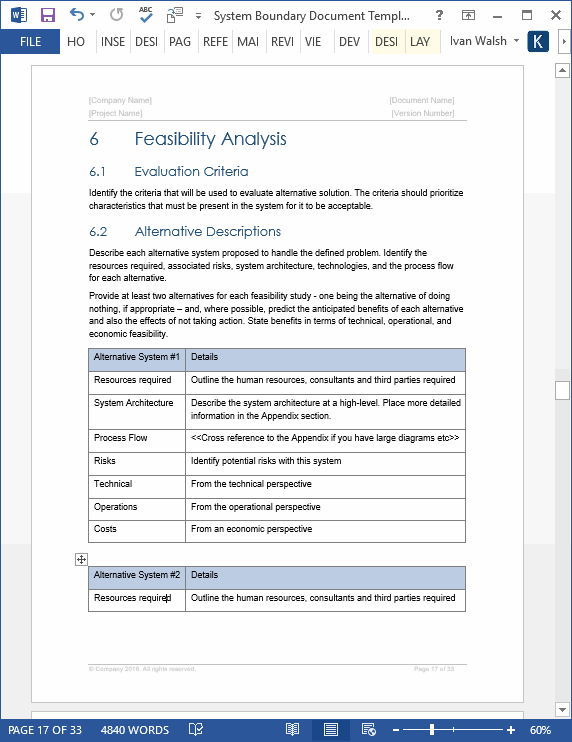Use this System Boundary Document template (SBD) to establish the boundaries of an information technology (IT) project. The System Boundary Document template captures the goals and objectives that the IT project is intended to satisfy. It also captures critical success factors and performance measures that provide the criteria to judge whether the deliverables have satisfied the business’ goals and objectives.
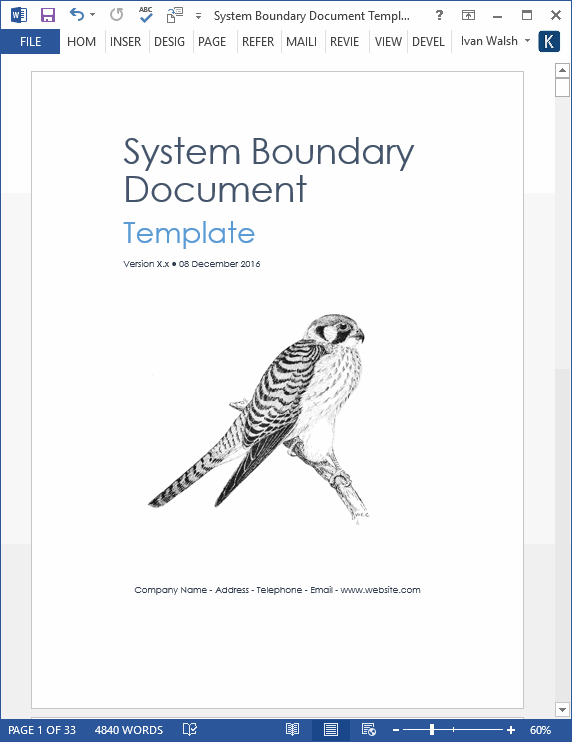
MS Word Template: Blue Theme
Here are sample screenshots from the Blue theme System Boundary Document template.
Use this SBD template to determine:
- Business Needs – Ensure that requirements satisfy the business need. Has the System Boundary Document highlighted areas outside of scope due to budgetary or resource restrictions?
- Feasibility – Can it meet requirements? Do you have the resources, experience, and budget to deliver this project?
- Costs – Are costs realistic? Use the System Boundary Document to factor in all costs for human resources, consultants, software, training etc
- Schedule – Is the schedule realistic? Are we over-optimistic on the delivery date? Have internal or political issues determined the end date and if so, how can we mitigate against this?
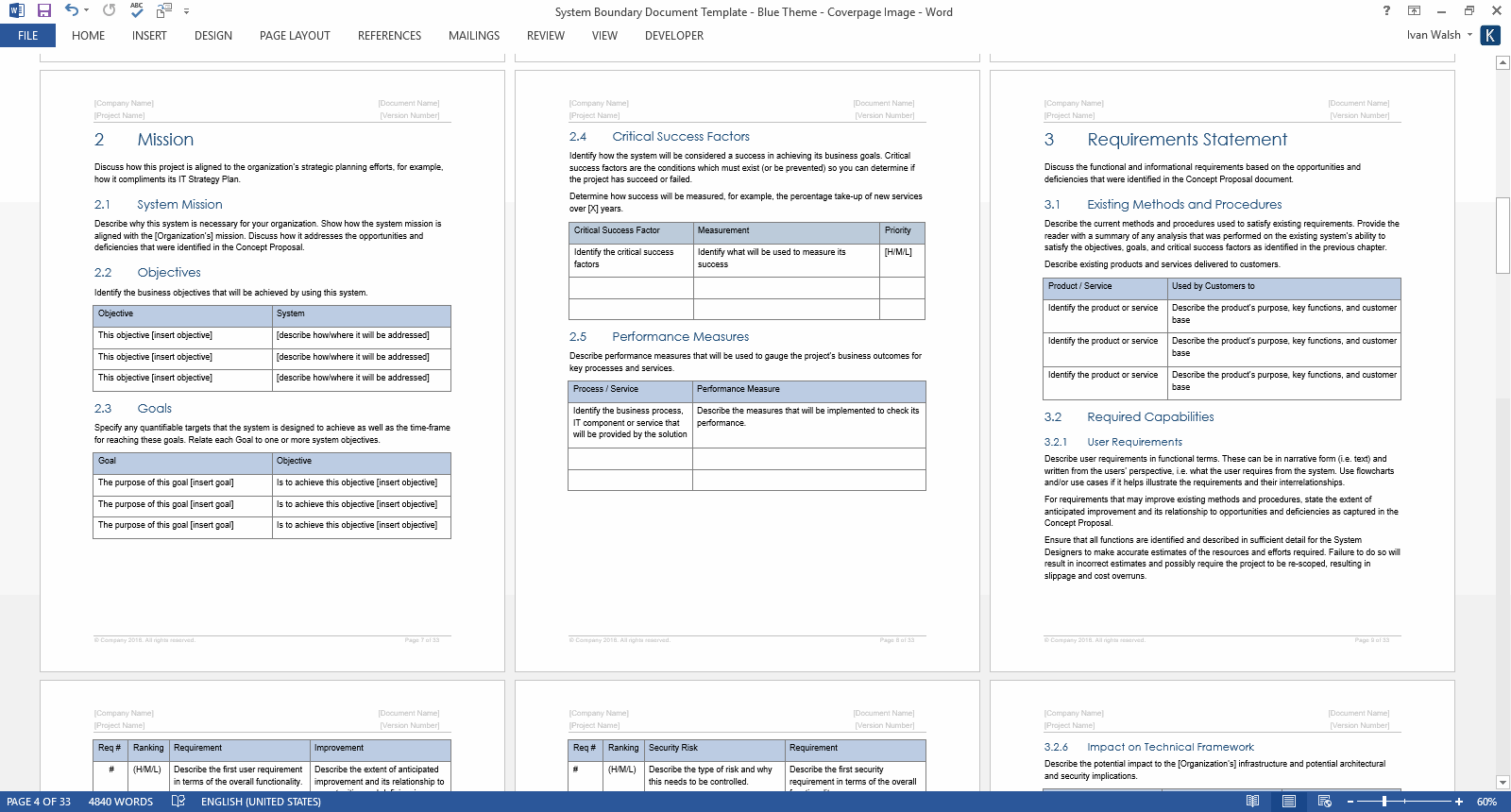
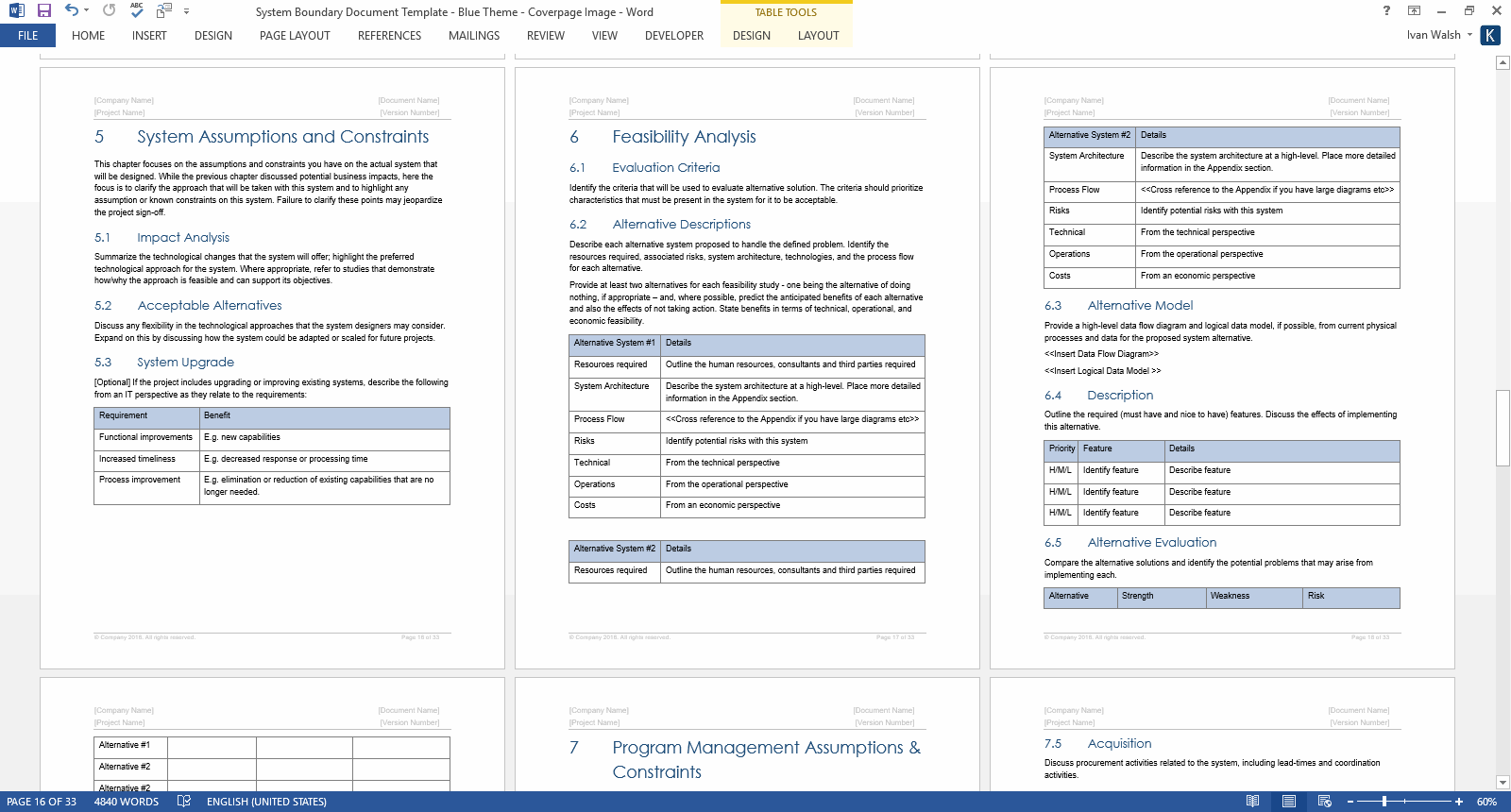
MS Word Template: Red Theme
Here are sample screenshots from the Red theme System Boundary Document template.

Chapter 1, Introduction
System Mission, Objectives and Goals
Chapter 3, Requirements Statement
Chapter 6, Feasibility Analysis
Chapter 9, Project Cost, Schedule, and Performance
Free System Boundary Document Excel Template
Here is a free System Boundary Document excel template which you can use for Performance Measures.
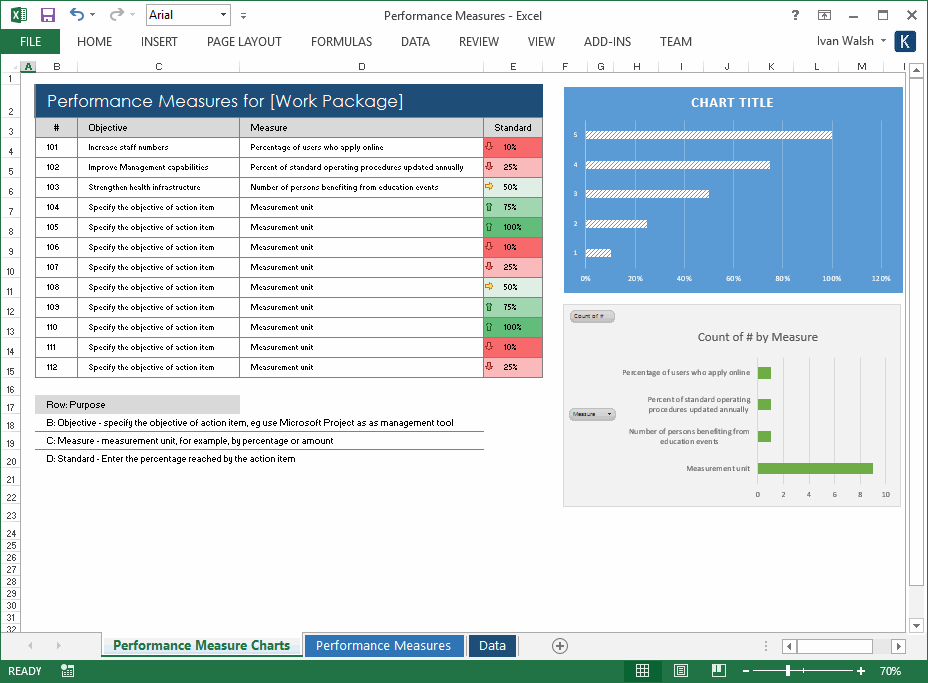
Performance Measures
Free System Boundary Document Visio Template
You can use this free Visio System Boundary Document for process mapping.
System Boundary Document Template: Table of Contents
Here is the table of contents for the System Boundary Document template.
1 Introduction
1.1 Purpose
1.2 Background
2 Mission
2.1 System Mission
2.2 Objectives
2.3 Goals
2.4 Critical Success Factors
2.5 Performance Measures
3 Requirements Statement
3.1 Existing Methods and Procedures
3.2 Required Capabilities
3.2.1 User Requirements
3.2.2 User Information Needs
3.2.3 Sensitive Information
3.2.4 Network Requirements
3.2.5 Interface Requirements
3.2.6 Impact on Technical Framework
4 Business Assumptions & Constraints
4.1 Organizational Structure
4.2 Impact of Automation
4.3 Legal
4.4 Security
4.5 Facility
5 System Assumptions and Constraints
5.1 Impact Analysis
5.2 Acceptable Alternatives
5.3 System Upgrade
6 Feasibility Analysis
6.1 Evaluation Criteria
6.2 Alternative Descriptions
6.3 Alternative Model
6.4 Description
6.5 Alternative Evaluation
6.6 Recommendation
7 Program Management Assumptions & Constraints
7.1 Organizational Support
7.2 Budget
7.3 Schedule
7.4 Facility
7.5 Acquisition
7.6 Other Projects
8 Cost-Benefit Analysis
8.1 Cost Analysis
8.1.1 Cost Categories
8.1.2 Project Cost Analysis
8.2 Benefit Analysis
8.2.1 Key Benefits
8.2.2 Tangible Benefits
8.2.3 Summary of Tangible Benefits
8.2.4 Intangible Benefits
8.2.5 Summary of Intangible Benefits
8.3 Comparison of Costs and Benefits for Project
8.3.1 Comparison of Tangible Benefits
8.3.2 Comparison of Intangible Benefits
8.3.3 Conclusion
8.4 Sensitivity Analysis
8.5 Results
9 Project Cost, Schedule, & Performance
9.1 Schedule
9.2 Budget
9.3 Lifecycle Cost Estimate
9.4 Performance
9.5 Risks
9.6 Return on Investment
10 References
System Boundary Document Template: Format & Contents
The templates are in Microsoft Word, Excel and Visio (.doc, .xls and .vsd) can be downloaded online for only $7.99. The template pack includes the following documents:
| 2 x System Boundary Document | 30 pages | |
| Performance Measures | 1 x worksheet | |
| Process Flow Template | 1 x Visio |
